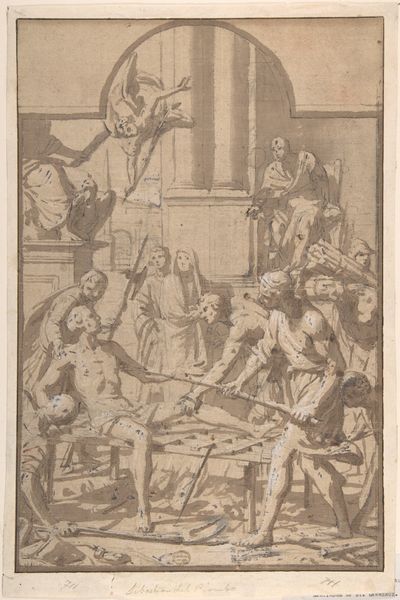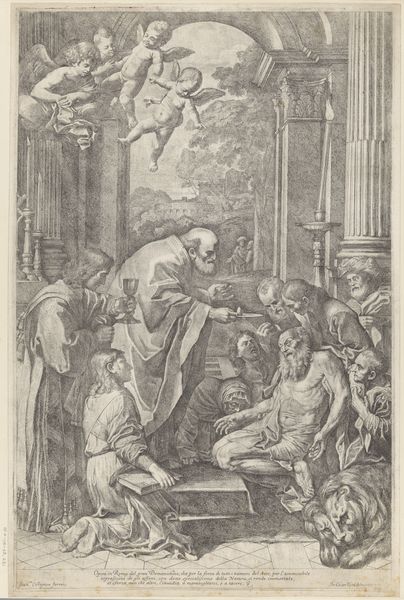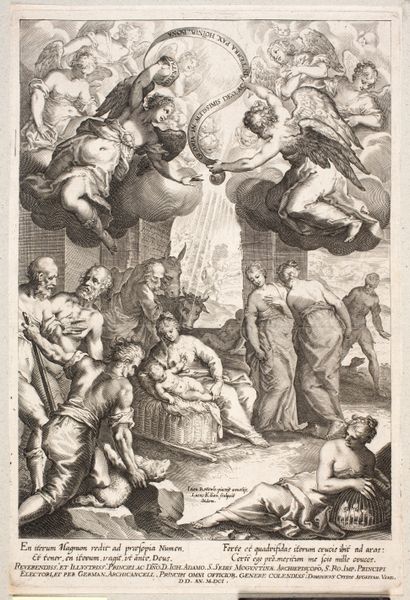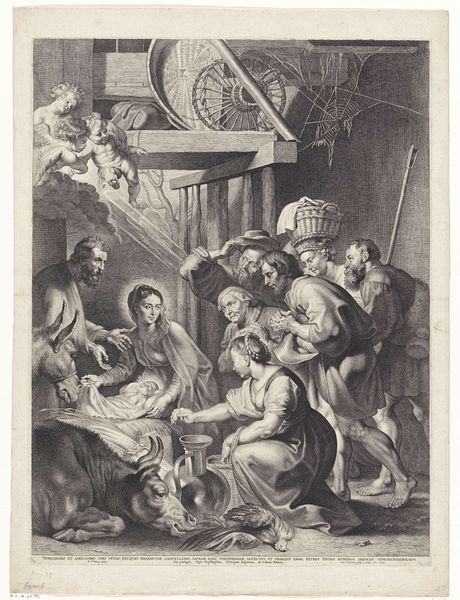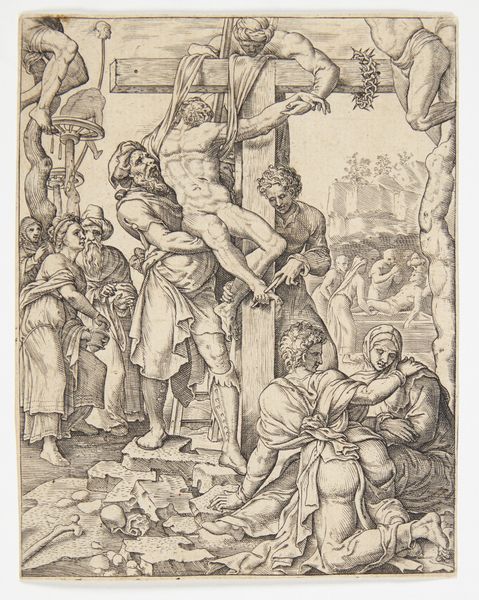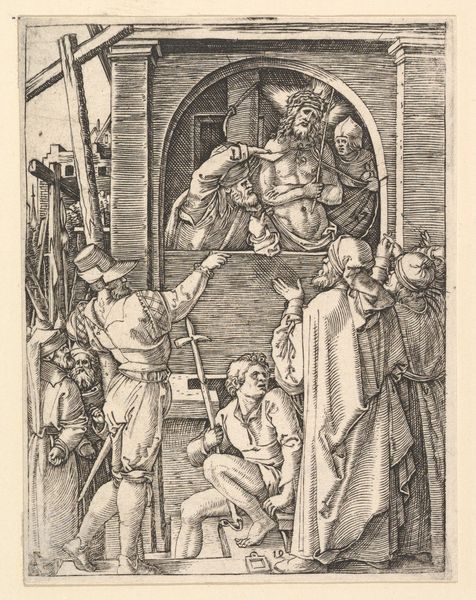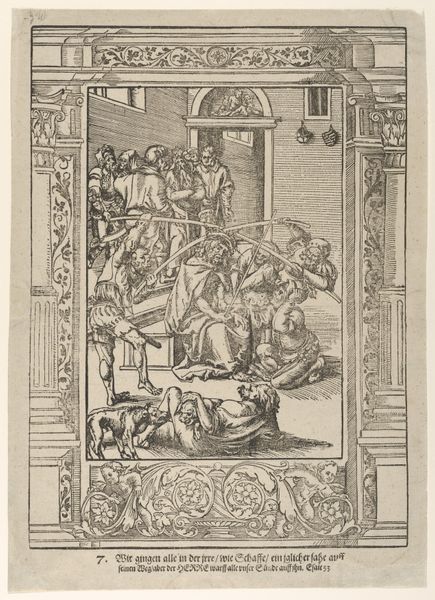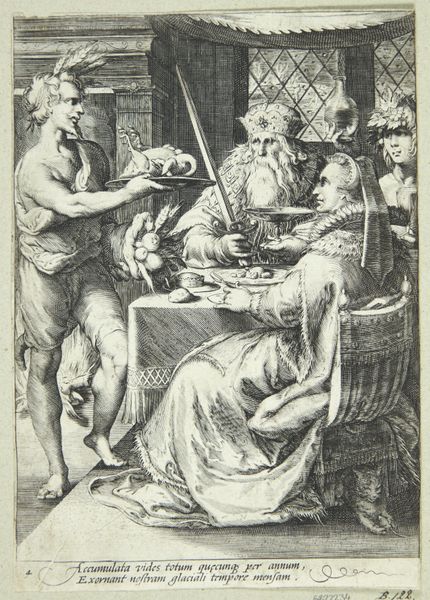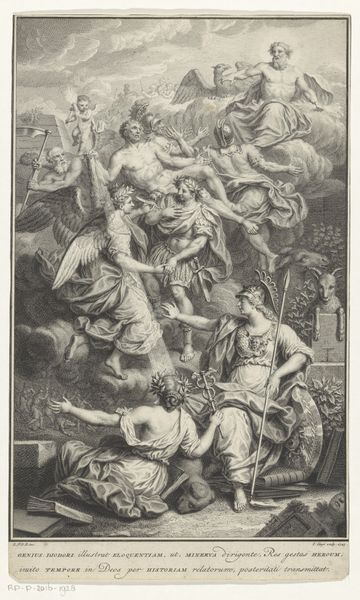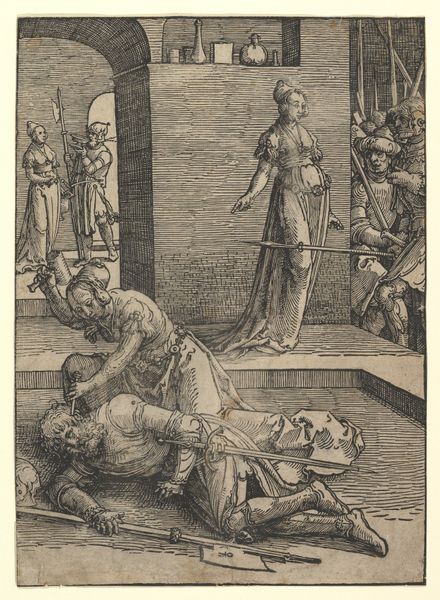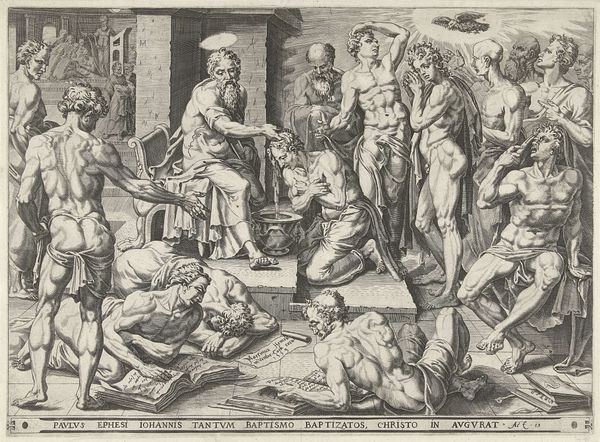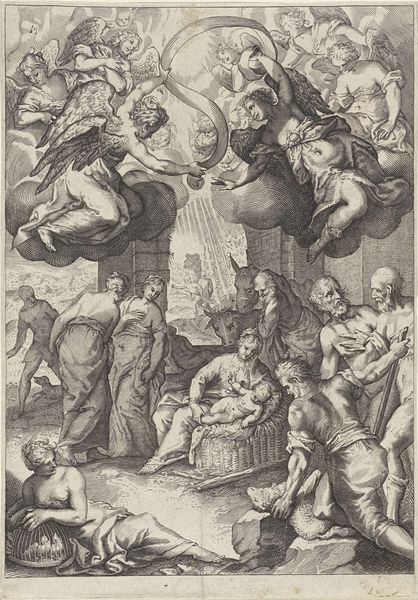
drawing, print, engraving
#
portrait
#
drawing
# print
#
mannerism
#
figuration
#
11_renaissance
#
history-painting
#
academic-art
#
engraving
Dimensions: sheet: 16 7/8 x 11 1/4 in. (42.8 x 28.6 cm)
Copyright: Public Domain
Cornelis Cort made this engraving, "The Practitioners of the Visual Arts", in the Netherlands during the late 16th century. This print encapsulates a humanist vision of artistic training then taking hold across Europe. The image shows a group of young artists diligently studying classical sculpture, anatomy, and perspective – cornerstones of academic art education. The scene appears to be an idealized workshop, perhaps connected to an institution such as the Haarlem Guild of Saint Luke, where Cort was active. Notice how the figures draw from classical models: Minerva, river gods, and horses. A skeleton hangs suspended from a rope, and the crowded composition alludes to the density of knowledge required for artistic mastery. Prints like this one played a crucial role in disseminating artistic ideas and standardizing workshop practices across Europe. The social and institutional history of art helps us to understand the value placed on academic training during the Renaissance and the ways in which art was perceived as a form of intellectual endeavor. Records from the Haarlem Guild of Saint Luke would be a valuable resource in helping us understand more about this work.
Comments
rijksmuseum about 2 years ago
⋮
Cornelis Cort made this depiction of an idealized art academy about 150 years after the appearance of the first engraved prints. Depicted prominently in the right foreground is the art of printmaking in the guise of an engraver cutting the first lines in a plate with a burin. The art of printmaking is here on an equal footing with the traditional visual arts (painting, sculpture, and architecture): it has claimed its rightful place as a fully-fledged art form!
Join the conversation
Join millions of artists and users on Artera today and experience the ultimate creative platform.
